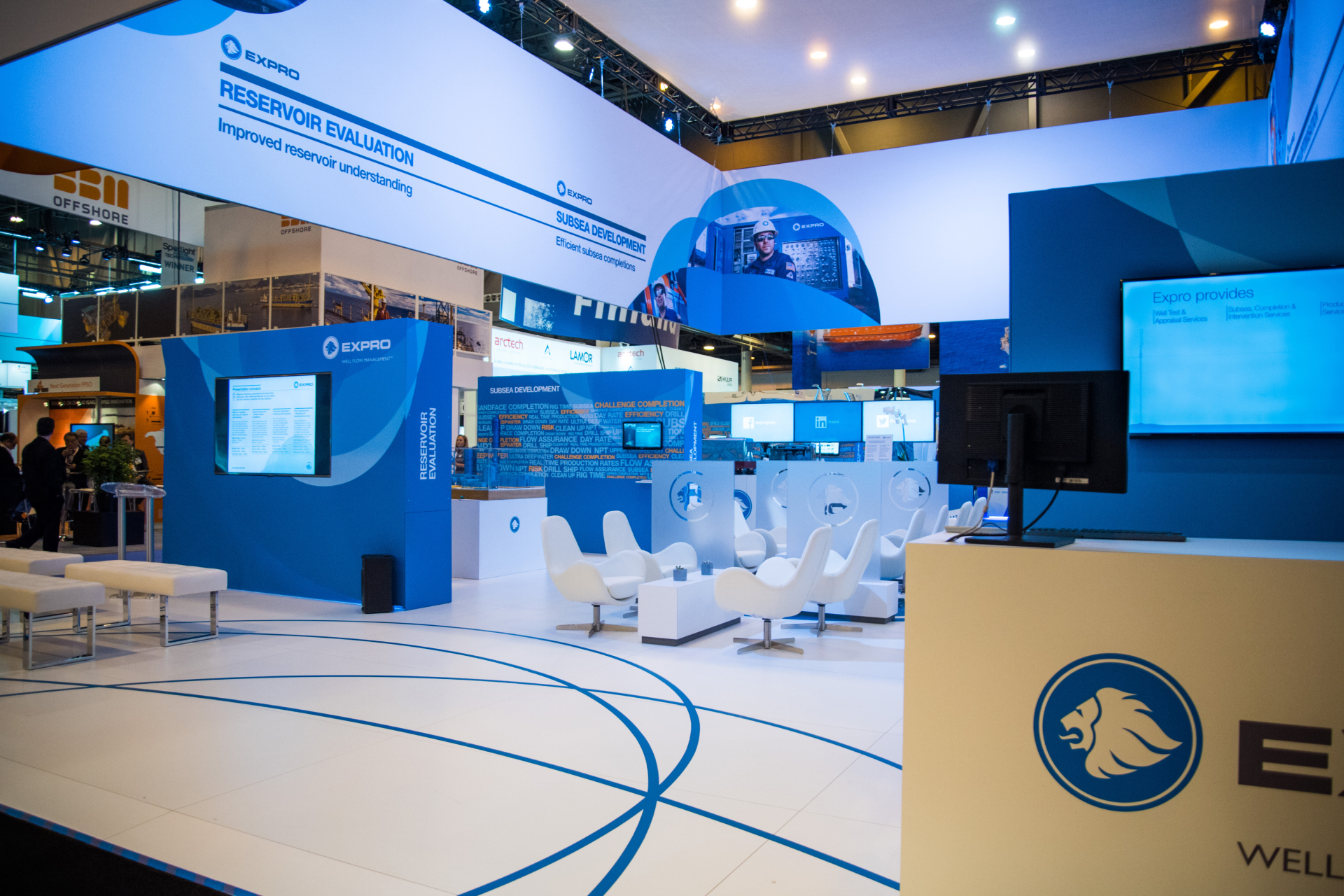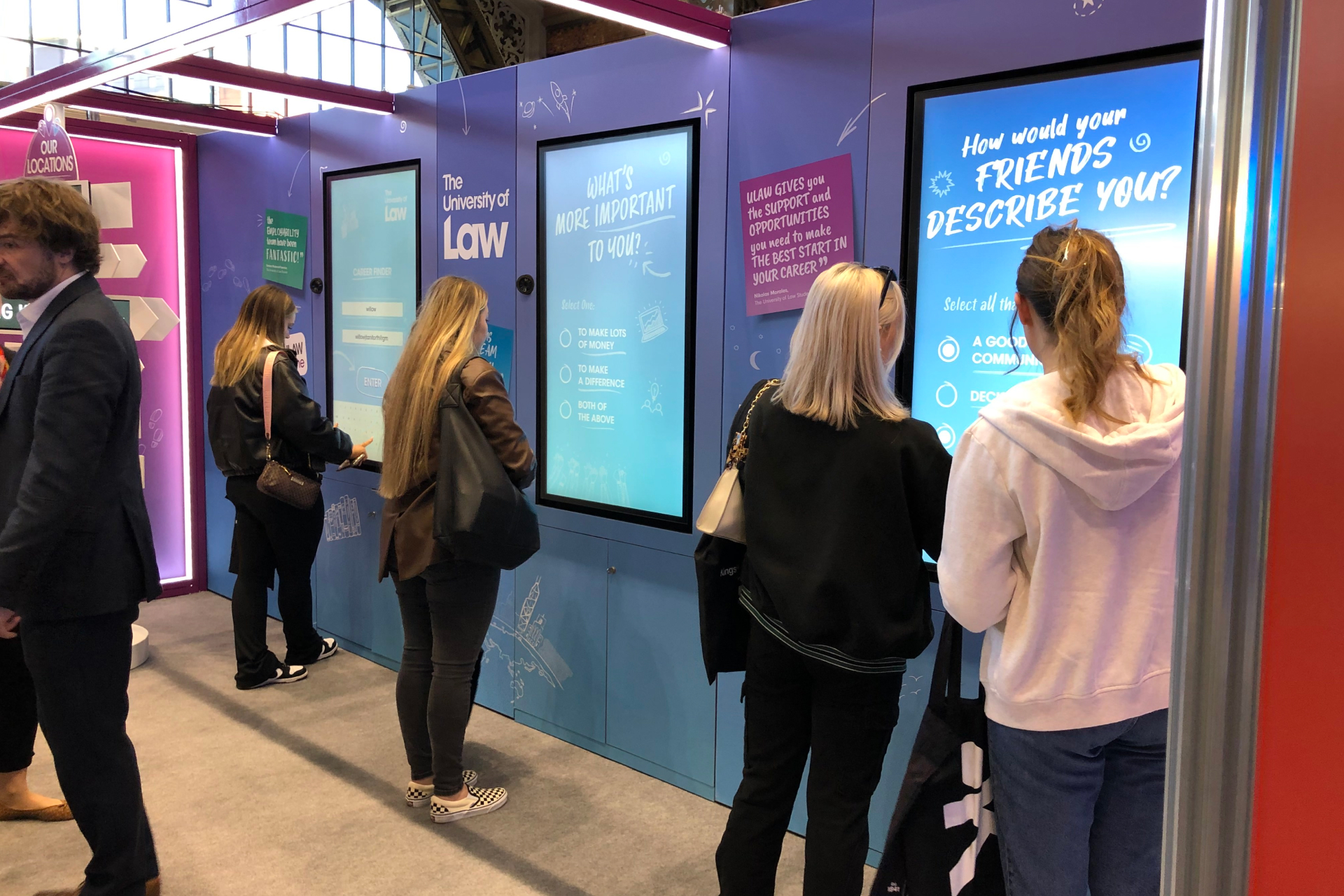Designing for ROI: How Effective Exhibition Stands Drive Business
introduction
In the dynamic world of international exhibitions, where hundreds of brands clamour for attention, standing out is not just a matter of prestige—it's a necessity. It’s here, amidst the noise and colour, that the art of designing exhibition stands becomes a pivotal strategy for businesses aiming to drive significant return on investment (ROI). Mastering this art ensures that your brand not just participates, but truly competes and excels in the global marketplace. In this article we are going to explore a range of exhibition ideas that will help you maximize your return on investment.
the role of exhibition stands in brand strategy
Exhibition stands are more than mere physical spaces where products or services are showcased. They are potent marketing tools that, when skilfully designed, can encapsulate and amplify a brand’s essence, attract potential clients and partners, and create lasting impressions. A well-conceived stand design integrates brand identity, message, and objectives into a visual and spatial experience, making it a critical component of a brand's overall strategy at international exhibitions.
emphasizing brand identity
The foundation of an effective exhibition stand is a strong, clear brand identity. This involves a visually appealing logo, a memorable tagline, and a coherent colour scheme that resonates with the brand’s core values and mission. When these elements are consistently applied across the stand design, they facilitate brand recall and recognition, making it easier for visitors to identify and differentiate the brand from its competitors.
engaging the target audience
Understanding and catering to the target audience is paramount in exhibition design. By designing with the audience's preferences, interests, and needs in mind, businesses can create an engaging and interactive experience that captivates visitors' attention. This can include the use of advanced technologies, interactive screens, product demonstrations, or even immersive experiences that tell the brand’s story in compelling ways.
crafting a visually compelling narrative
A stand must be more than just visually appealing—it should tell a story. This narrative is crafted through the interplay of graphics, multimedia content, and physical layout, embodying the brand’s values, vision, and innovation. A compelling narrative not only captures attention but also fosters emotional connections with visitors, making the brand’s proposition more impactful.
creating a destination within an exhibition
A successful exhibition stand design transforms the allocated space into a destination—a place that visitors are drawn to and remember. This involves leveraging design elements to create a sense of immersion, offering an escape from the hustle and bustle of the exhibition floor into a carefully crafted brand environment. This could involve incorporating elements of the brand's heritage into the design, utilizing sensory experiences such as scent and sound, or offering exclusive in-stand experiences.

driving business with roi-focused design
Investing in an exhibition stand represents a significant financial commitment for any business. Therefore, ensuring that this investment yields a substantial return is crucial. The design of the stand plays a critical role in achieving this by focusing on several key aspects.
maxminizing space for mazimum impact
The efficient use of space is critical in exhibition stand design. Every square inch of the stand must serve a purpose—whether it's to display products, facilitate interactions, or provide information. Well-designed stands utilize space in a manner that guides visitors through a logical flow, encourages engagement, and effectively communicates the brand’s message.
incorporating technology for elevated experiences
Integrating the latest technologies into stand designs can significantly enhance the visitor experience and engagement. From virtual reality (VR) to showcase products or services in immersive environments, to augmented reality (AR) for interactive experiences, technology can play a pivotal role in attracting visitors and keeping them engaged longer.
Moreover, technology can also serve as a valuable tool for collecting visitor data, enabling businesses to follow up on leads and measure the effectiveness of their exhibition strategy.
strategic layout and flow
The layout is a fundamental component that influences visitor engagement. An open and inviting layout with clear signage guides visitors smoothly through the stand, naturally leading them to key areas of interest and interaction. Strategic placement of products, demonstration areas, and meeting spaces encourages visitors to linger, discover, and engage more deeply with the brand.
interactive elements to foster engagement
Interactivity within a stand can significantly enhance visitor engagement. This may include hands-on product demonstrations, interactive screens that allow for personalized experiences, or gamification elements that make interactions both fun and memorable. Such features not only draw visitors in but also provide valuable opportunities for education and engagement.
data-driven design decisions
Utilizing data to inform design decisions can greatly enhance the effectiveness of an exhibition stand. This includes pre-exhibition research to understand target audience behaviours and preferences, as well as post-exhibition data analysis to assess engagement levels and overall success. Incorporating feedback loops, where data collected from one exhibition informs the design for the next, ensures continuous improvement and adaptation to changing audience needs.
sustainability as a competitive advantage
In today’s environmentally conscious world, incorporating sustainable practices into stand design can serve as both a moral choice and a competitive advantage. Sustainable materials, energy-efficient lighting, and reusable components not only reduce the environmental impact but also align with the values of many consumers and businesses, enhancing brand perception and appeal.

measuring ROi: beyond the numbers
While the financial return on investment is a crucial metric, measuring the success of an exhibition stand also involves evaluating qualitative factors. Brand awareness, customer engagement, and quality of leads generated are significant indicators of how effectively the stand contributed to the business’s goals.
tracking engagement and leads
Modern technologies and social media platforms have made it easier than ever to track engagement and measure interest. By analysing data collected from interactions at the stand, including lead capture forms, social media engagement, and direct feedback, businesses can gain valuable insights into the effectiveness of their exhibition strategy.
long-term brand building
The impact of an effective exhibition stand extends far beyond the exhibition itself. It contributes to the long-term building and strengthening of the brand, establishing credibility, and fostering relationships with customers and partners. An innovative and memorable stand can continue to generate buzz and word-of-mouth marketing long after the event has concluded.
the importance of quality over quantity
While the sheer numbers of visitors and leads are important, the quality of these leads is crucial. A stand that is designed to attract and engage the most relevant and high-potential visitors results in more meaningful interactions and higher quality leads, ultimately leading to a better ROI.
brand exposure and media attention
An innovative and visually striking stand can generate significant brand exposure, attracting not just visitors but also media attention. This can amplify the brand’s presence far beyond the exhibition, offering additional ROI through free media exposure and increased brand awareness. Capturing and leveraging social media content shared by visitors can also extend the reach and impact of the stand.

conclusion
Designing for ROI in the context of international exhibition stands involves a strategic blend of brand identity enhancement, audience engagement, and innovative design principles. By focusing on creating an impactful, memorable experience, businesses can significantly increase their chances of achieving a substantial return on their investment. The key lies in understanding the brand’s core values and objectives, the interests and needs of the target audience, and the innovative use of space and technology to create a stand that not only stands out but also effectively communicates the brand's message.
In the competitive arena of international exhibitions, a well-designed stand is a powerful tool in a brand’s arsenal, capable of driving business, generating leads, and building lasting relationships. By prioritizing ROI-focused design principles, brands can ensure their exhibition stands serve as a focal point for achieving their marketing and business objectives, proving that, indeed, where design meets strategy, business thrives.

Comments